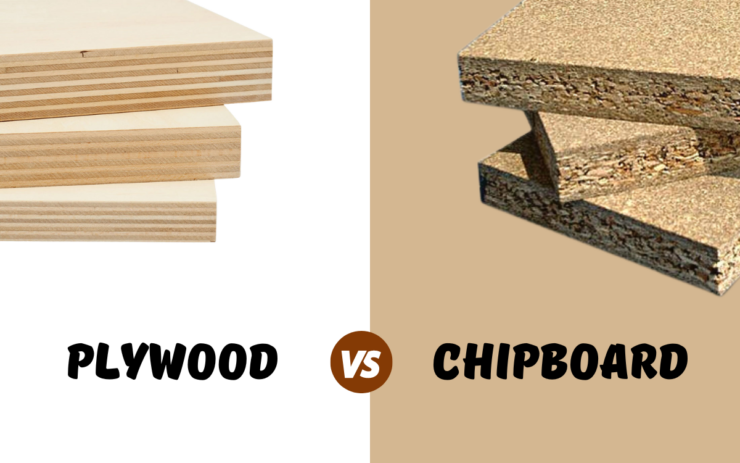One of the most important things to consider when you are renovating or improving your home is what type of material you will be using for your flooring. Today we will discuss plywood vs chipboard and try to figure out which one is a better option.
There are numerous things you need to consider when making this choice, such as price, durability, aesthetics, and many more. Both plywood and chipboard are similar materials at first sight, but there are some key differences that may tip the scales when making this decision. In order to help you make an educated choice, we have gathered some information related to this topic we would like to share. So, without further delay, let us get started.
What is Chipboard?
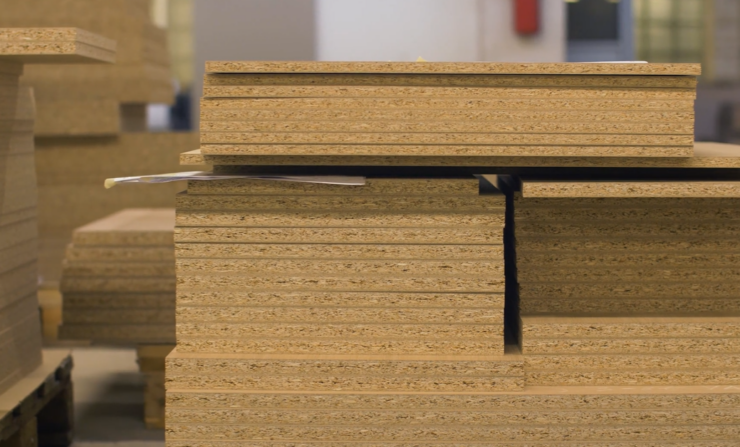
Chipboard, which is also known as particle board, is a type of reconstituted wood made from chips, sawdust, and shavings that were compressed together using resin before they were made into lightweight boards. Chipboard is also one of the most inexpensive materials you can get.
This wooden board can be used in all sorts of construction, including flooring, workbenches, wall bases, countertops, and cabinets. However, chipboards are not an ideal choice for exterior construction because it does not do well in wet conditions.
It is mostly used for the interior walls, flooring, or workbenches. Another thing that is important to mention is that chipboards can be protected with an acrylic sealant, which can improve the wood’s state and make it more suitable for exterior use. Sadly, even if you do this, it still will not be the best material to use for all weather conditions.
Essential Features
| Low Strength |
| Smooth surface |
| Excellent for DIY projects and home decor |
| Affordable |
- Budget-friendly
- Chipboard surface is usually smooth, making the end product more visually appealing
- Since it is lightweight, the furniture made of these boards is pretty easy to lift and transport
- It is made of scraps of other lumber products, and no additional cutting of trees takes place, making it more environmentally friendly
- Excellent for ready-made furniture
- Thermo-acoustic insulation of chipboard makes it an ideal material for the false ceiling of auditoriums, theaters, etc.
- It is a low-strength wood board and cannot support heavy loads
- The manufacturing of chipboards involves the use of urea-formaldehyde resin, making the boards potentially toxic
- When exposed to a lot of moisture, it can expand, wrap, and discolor easily
- It does not hold well against nails and screws
- Relatively low durability
What is Plywood?
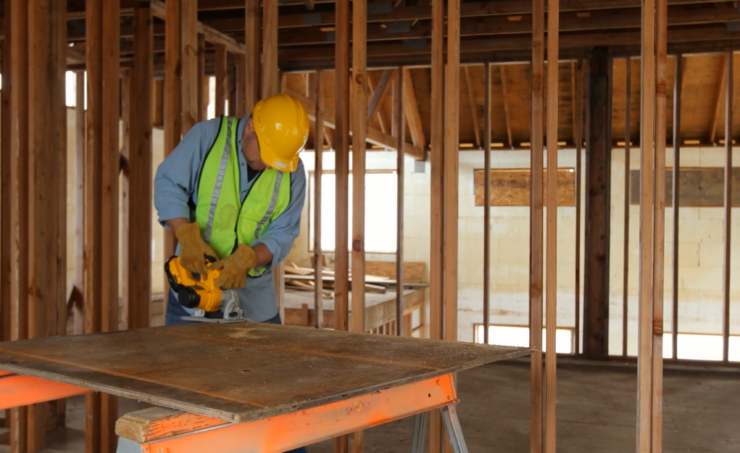
Plywood is a type of wooden board that is manufactured from multiple milled wood piles that have been compressed together with an adhesive. This a strong, affordable, lightweight, and naturally weatherproof wooden board that can be used in numerous ways in construction.
This type of wooden board is best used in construction projects that require strong materials, such as subfloors, wall supports, roofing, cabinets, shelving, furniture, and wall panels. The adhesive that is used to bond the plies in plywood directly impacts its weatherproof properties.
Cheaper plywood can withstand moisture to a certain degree but will not do well if exposed to water or humidity permanently. On the other hand, plywood with damp-proof glue is completely waterproof and is an excellent choice for exterior and interior construction.
Essential Features
| High strength |
| Rough surface |
| Excellent for making furniture like cupboards, cabinets, doors, etc. |
| Expensive |
- Very strong material and is less susceptible to all sorts of physical damage
- It shows high dimensional stability with reduced expansion and shrinkage
- High durability due to the strong adhesive used in the manufacturing process
- It is less susceptible to water damage
- Marine variation of plywood is completely waterproof
- It can be used both indoors and outdoors
- Highly versatile
- A bit expensive
- Since it is a very strong material, it can be difficult to cut or mold it
- The edges of the plywood need to be finished with either veneer or laminate
- Its edges splinter, so it might be difficult to get a smooth cut
Plywood vs Chipboard – Comparison
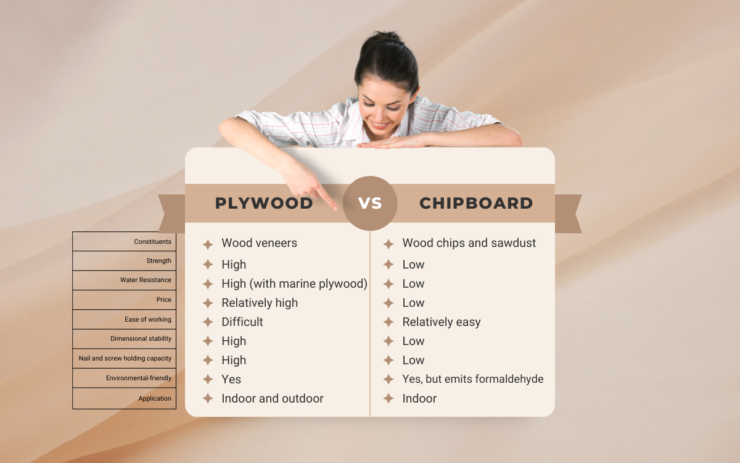
| Parameter | Plywood | Chipboard |
| Constituents | Wood veneers | Wood chips and sawdust |
| Strength | High | Low |
| Water Resistance | High (with marine plywood) | Low |
| Price | Relatively high | Low |
| Ease of working | Difficult | Relatively easy |
| Dimensional stability | High | Low |
| Nail and screw holding capacity | High | Low |
| Environmental-friendly | Yes | Yes, but emits formaldehyde |
| Application | Indoor and outdoor | Indoor |
Types of Plywood
There are two main types of plywood – natural and engineered. Both types find a wide variety of appliances in construction-related jobs and are of very high quality. In the section below, we will break down each type and its sub-types.
1. Natural Plywood
Natural plywood comes from the same tree, but the layers are turned 90 degrees for a better visual appearance. There are also three types of natural plywood, including mahogany, pine, and oak.
2. Engineered Plywood
This type of plywood uses different types of wood to create unique patterns that can range from very plain to intricate designs. This type has numerous appliances in construction-related jobs, but also in the manufacturing of high-quality furniture.
Types of Chipboard
There are a total of three types of chipboard – high-density fiberboard, medium-density fiberboard, and oriented strand board. In the section below, we are going to break down each type and its sub-types.
1. High-Density Fiberboard
This type of chipboard is constructed of wood scraps and sawdust. This is a very strong wood, but it is also pretty heavy due to its density. These boards are a very good choice when creating kitchen cabinets, shelves, and similar types of furniture.
2. Medium-Density Fiberboard
This variation is a denser composition than high-density fiberboard, and it has fewer air pockets which makes it a lot easier to work with. Medium-density fiberboard is an excellent choice when you need quality boards for flooring, cabinets, and some types of furniture.
3. Oriented Strand Board
Oriented strand board is similar to medium-density fiberboard, but it has a smoother surface and fewer pinholes. In addition, it contains more resin than other types of chipboard, so it is often used in outdoor applications due to its resistance to elements.
When to Use Plywood Over Chipboard?
Plywood finds the best use in residential construction jobs. This is due to the fact that these jobs require a strong and water-resistant build. Plywood also comes in variable grades, styles, and exposure levels.
Since plywood has better resistance to moisture than chipboard, it is better to use it in construction jobs that are done for places that have high humidity – basically anything outdoors or kitchens and bathrooms.
The most common appliances for plywood include:
- Subflooring
- Wall supports
- Roof decking
- Shipping crates
- Cabinets
- Shelves
When to Use Chipboard Over Plywood?
Chipboard is cost-efficient, and it finds a wide variety of uses. Since it is made from recycled wood shavings compressed together with resin, it is not as strong or water-resistant as plywood. Its design is also not the best, so it requires finishing and painting to improve the look.
However, there is a benefit of its makeup as it can create high core density, which makes it ideal for projects that require acoustic resonance (theaters, cinemas, bars, etc.). Here are some of the best appliances for chipboard:
- Wall bases
- Countertops
- Flooring protection
- Underlayment
- Workbenches
- Speaker cabinets
- Shed interiors
- Headboards
- Interior cupboards
- Structural sheathing
- Beam webs or centers
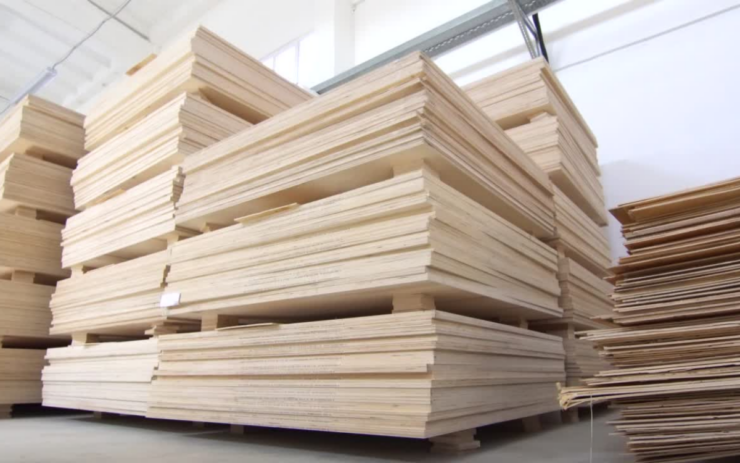
Plywood Grades
The materials are easily differentiated by their grades. The main things that determine the material’s grade are the number of defects and the work that goes into repairing the materials. You will find a mark or stamp on every material grade, which eases the identification.
| S Grade (Highest) | Only minor knots and characteristics |
| BB Grade (Medium) | Spliced-in oval patches replace any major knots and defects |
| WG Grade (Lower) | Open defects on smaller knots |
| C Grade (Lowest) | Open defects |
Chipboard Grades
Chipboard or particle board is available in different grades that are mostly defined by the usage and application. Here are some grades that you will most commonly run into.
| Industrial Grade (M2 and M3) | Can be used in cabinets, furniture, and fixtures |
| Commercial Grade (MS) | Can be used in cabinets and laminated panels |
| Countertop Grade (M2) | Can be used in post-formed countertops and laminated panels |
| Shop Grade (M1) | Economy panel for non-structural applications |
Plywood vs Chipboard – Which is Heavier?
Plywood sheets are considerably lighter than chipboard. This is due to the fact that plywood has low core density, while chipboard has a higher density. Since plywood is lighter, it is much easier to carry and maneuver than a chipboard.
Plywood also has a higher strength-to-weight ratio, which means that an individual sheet is much stronger than a single chipboard panel of the same weight, which grants numerous benefits in construction jobs and furniture manufacturing.
However, plywood will only be strong as its support, meaning that sheets need to be properly supported to avoid sagging and bowing. The heavier the plywood is, the stronger the supporting structure is required.
Plywood vs Chipboard – Which is better for wardrobes?
Wardrobes require more durability, which is why the best option for them is plywood. Composite wood is a lot more durable than chipboard, and since wardrobes are often handled roughly, so the plywood is an excellent and long-lasting option.
Plywood is made of sheets of wood veneer put together, and the strength is evenly distributed to create solid layers. It is the strongest wood composite, but it is also lighter and much easier to work with, which adds even more to overall versatility.
Things to Consider Before Opting for Plywood or Chipboard
To ensure you get the right product, you need to consider several factors that will ensure a quality purchase. In the section below, we have listed some important things you need to think about when picking between plywood and chipboard.
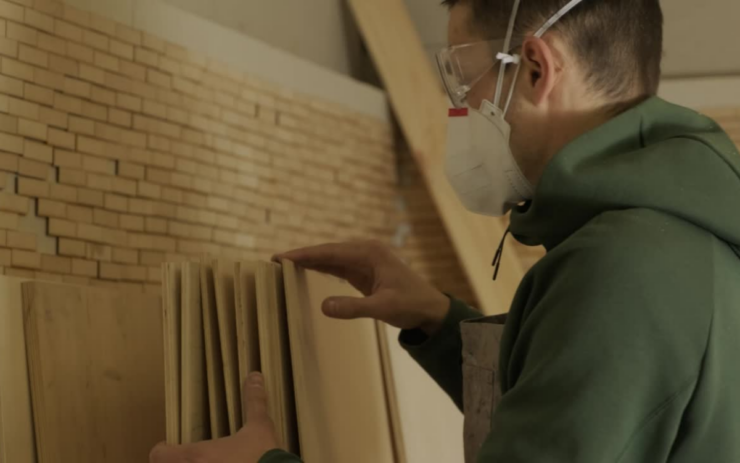
Longevity and Durability
If your project requires a wooden board that is built to last, plywood is a much better choice than chipboard. This is due to the fact that it is more resistant to warping, shrinking, and swelling.
Cost
Plywood is typically a more expensive option, but it is also a better long-term investment because you will not have to replace it as often due to its natural durability.
Water Resistance
Water resistance is a very important factor to consider. For example, if you are putting in flooring for a wet area, such as an outdoor patio or bathroom, plywood might be a better option since it can handle moisture better.
Quality of Surface
This entirely depends on the project you intend to tackle. Plywood has a smooth finish which is better for ceilings and walls, while chipboard has a rougher texture that may be harder to clean, but it is much more resistant to physical damage.
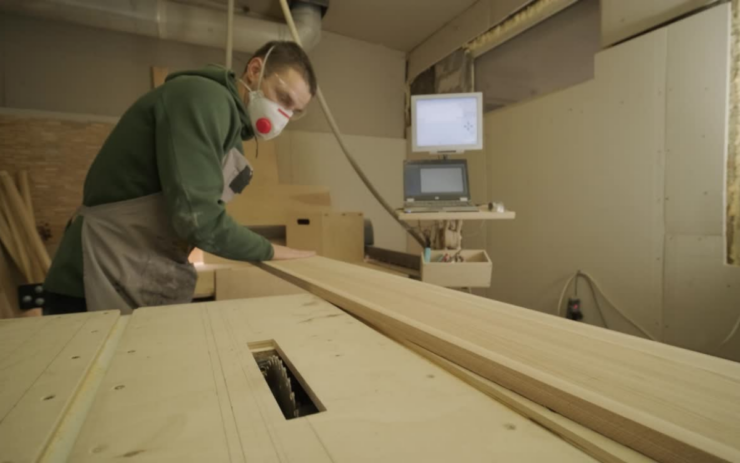
Plywood Maintenance
Maintenance is a very important thing regardless of your wood choice. When it comes to plywood, it is important to check for and fix any leaks as soon as they occur. If you have a wet area, consider installing a moisture barrier or waterproofing materials around it.
Since plywood is not very resistant to stains, get an all-purpose cleaner to remove any dirt or stains. Lastly, you can also use products that are specifically made for the maintenance of wood.
Chipboard Maintenance
Maintaining a chipboard is a pretty straightforward task. First of all, you will need to clean it with a damp cloth or vacuum. Wipe the surface down regularly using warm water combined with mild dish soap.
For more stubborn stains and marks, use a gentle scrub brush and soap that is specifically made for wood floors. Lastly, you should avoid using commercial cleaners because they can damage the surface.
Bottom Line – Which Is Better, Plywood or Chipboard?
Ultimately, which one is better entirely depends on your woodworking project. Chipboard is cheap, light, and a better solution for a wide variety of low-budget projects around the house (mostly indoor projects).
On the other hand, you have plywood that is much stronger but more expensive as well. It can be reinforced, treated, or stained, which purposes it for any residential construction project. Plywood is also excellent for both outdoors and indoors and is very easy to use, which gives it the edge over chipboard in many appliances.
Before you opt for either of these boards, make sure to analyze your woodworking project thoroughly, and you will, without any doubt, make the right choice and get the best value for your money’s worth.

